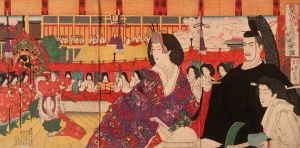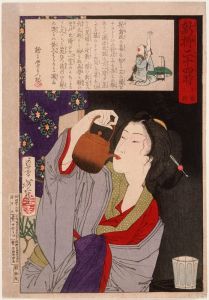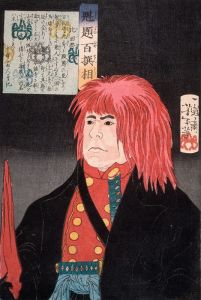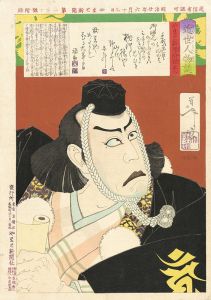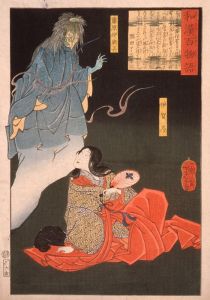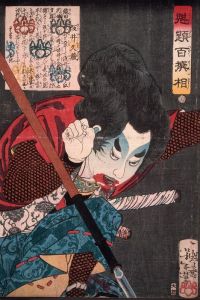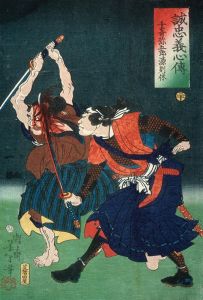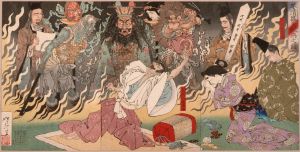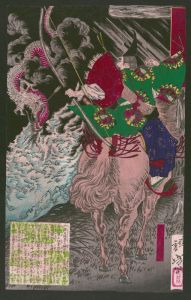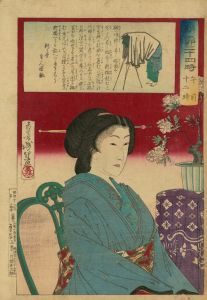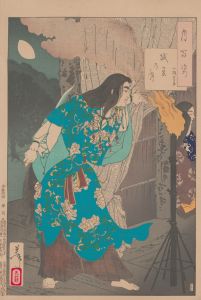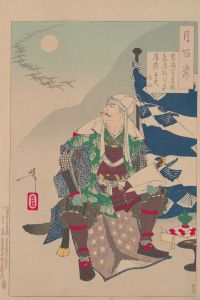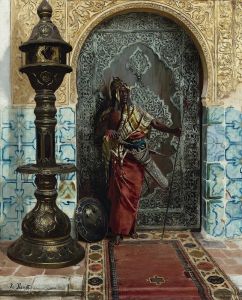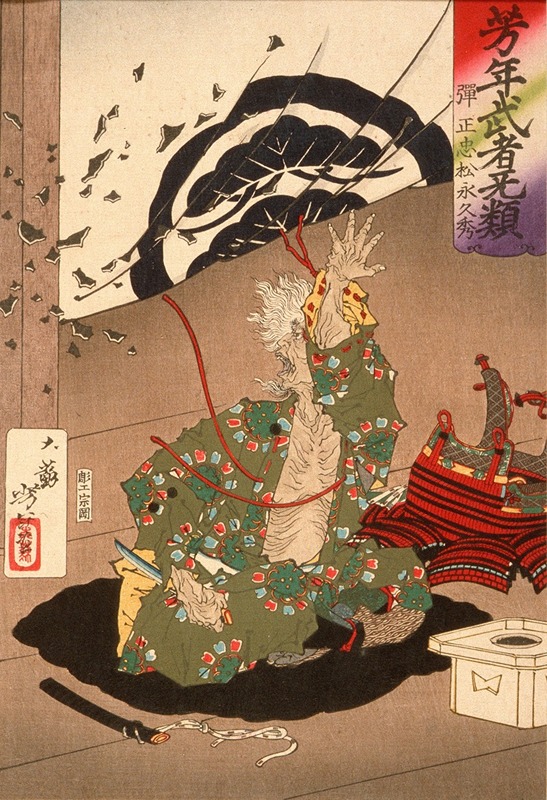
Danjō Matsunaga Hisahide before His Suicide
A hand-painted replica of Tsukioka Yoshitoshi’s masterpiece Danjō Matsunaga Hisahide before His Suicide, meticulously crafted by professional artists to capture the true essence of the original. Each piece is created with museum-quality canvas and rare mineral pigments, carefully painted by experienced artists with delicate brushstrokes and rich, layered colors to perfectly recreate the texture of the original artwork. Unlike machine-printed reproductions, this hand-painted version brings the painting to life, infused with the artist’s emotions and skill in every stroke. Whether for personal collection or home decoration, it instantly elevates the artistic atmosphere of any space.
Tsukioka Yoshitoshi's woodblock print Danjō Matsunaga Hisahide before His Suicide is a notable work from the late Edo period of Japan, created as part of Yoshitoshi's series Eimei nijūhasshūku (Twenty-eight Famous Murders with Verse). This series, produced between 1866 and 1867, is recognized for its dramatic and often violent depictions of historical and legendary figures, reflecting the ukiyo-e tradition's engagement with themes of heroism, tragedy, and morality.
The print portrays Matsunaga Hisahide (1510–1577), a historical figure from Japan's Sengoku period, moments before his death. Hisahide was a daimyō (feudal lord) and a skilled strategist known for his cunning and ambition. He served under various powerful warlords, including Miyoshi Nagayoshi and later Oda Nobunaga. Hisahide's legacy is controversial; he is remembered both for his political acumen and for his acts of betrayal, which earned him a reputation as a treacherous figure in Japanese history.
The scene depicted in Yoshitoshi's print refers to the dramatic conclusion of Hisahide's life. In 1577, after rebelling against Oda Nobunaga, Hisahide found himself besieged at Shigisan Castle. Facing inevitable defeat, he chose to commit seppuku (ritual suicide) rather than surrender. According to historical accounts, Hisahide destroyed a prized tea kettle, a symbol of his wealth and status, to prevent it from falling into Nobunaga's hands. This act has been interpreted as a final gesture of defiance and pride.
Yoshitoshi's depiction captures the intensity and pathos of this moment. Hisahide is shown in a dramatic pose, surrounded by the chaos of his final moments. The composition emphasizes his resolve and the violent circumstances of his death, consistent with the series' focus on dramatic and often gruesome historical events. Yoshitoshi's use of bold lines, dynamic movement, and vivid color exemplifies his mastery of the ukiyo-e style and his ability to convey complex emotions through visual storytelling.
This print is significant not only for its artistic qualities but also for its historical and cultural context. Created during a period of social and political upheaval in Japan, Yoshitoshi's works often reflect the anxieties and transformations of the late Edo period. Danjō Matsunaga Hisahide before His Suicide stands as a powerful example of how art can engage with history, offering both a visual narrative and a reflection on the values and conflicts of its time.





